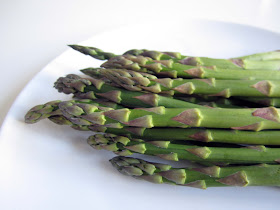The Terrine is becoming a bit of a signature dish, every time I invite large numbers of people to dine I usually unveil a terrine. The Little Idiot is the master of them, but I am a fast learner. In autumn and winter we made them with rabbit and pheasant, heavy with garlic and juniper. This one was for picnicking in the Lakes and as it is spring and sunny we decided on a lighter chicken version.
To start you need to poach a good free range chicken, I went for a corn fed one that was lovely and yellow. The poaching is a tip learnt from the St. John recipe books. I always used to roast whichever meat I had chosen, but after poaching the chicken for the
Chicken, bacon and caper pie I haven’t looked back... The meat is so much more juicy and tender and tasty.
Fill a large pan with water, an onion peeled and halved, a chopped carrot, a chopped stick of celery, some pepper corns, a pinch of salt and a bundle of herbs such as thyme, parsley and bay leaves. Put the chicken into the pot, it doesn’t need to be entirely covered, you can turn it half way through. Bring it to the boil and then let it simmer for 45 minutes with the lid on, turning the chicken over half way through. When it is done take it out of the water and allow it to cool. You then need to strip all of the meat into bite size pieces from the chicken, discarding any skin and bones.
While the chicken is poaching you can prepare the terrine tin. You need a long deep terrine type tin, or something a bit loaf shaped. Grease the inside of it with butter and lay a few bay leaves on the base for decoration when it is turned out. Line the whole tin with streaky unsmoked bacon, allowing it to flap over the edges so there is enough to turn over the top of the terrine when it is full.


Next prepare the sausage meat, you can get it from the butchers, or in large packets in the supermarket, or take it out of some actual sausages, but make sure they are plain ones as you will add your own flavour. The amount will depend on the size of your tin, I think I used about 750g. Empty it into a big bowl so you can begin to season it. Add a teaspoon of chopped lemon thyme, a teaspoon of normal thyme leaves, some salt and pepper and a splash of brandy. As we were going for springy and fresh we added the zest of half a lemon, 4 or 5 crushed juniper berries and a clove of garlic finely chopped. Finally I toasted some blanched almonds, chopped them up and added to the mix. It is not an exact science and has been different every time so far, but always good. If you can get hold of some chicken livers, chop about a handful and add to the mix.

Mix everything together with your hands and spread a layer of the sausage mix over the base of your tin, on top of the bacon, about 1cm deep. Then add a layer of chicken meat about the same depth. Continue adding alternate layers until the tin is full to the brim and turn the bacon over and in to seal everything up.
Next you need to cook the terrine. Cover the tin with buttered grease proof paper and tie it with string tightly around the top to seal it as best you can. Place the terrine into a large baking tray and pour in boiling water to just over half the height of the terrine tin, to create a bain-marie. Put it in a low oven at 150°C for about an hour and a half. Check it after an hour however, it is ready when the terrine has shrunk a bit and come away from the sides of the tin.
Take it out and let it cool on the side, grease proof paper still in place, with a weight on top to press it. Finding the right sized weight has always been a problem for me, a wine box with books and pans balanced on top this time round... A brick would probably be the ideal shape. This weighting makes sure the terrine has the correct pressed firm texture. Don't put a good book straight on it however as a little juice and jelly might ooze out.
Leave it to cool and press overnight as a minimum, after this it will happily sit in the fridge for a few days before you need it, the flavours only improve... When you are ready to serve, run a knife around the edge of the tin and tap it out onto a board. Slice up and serve with a good chutney...























































